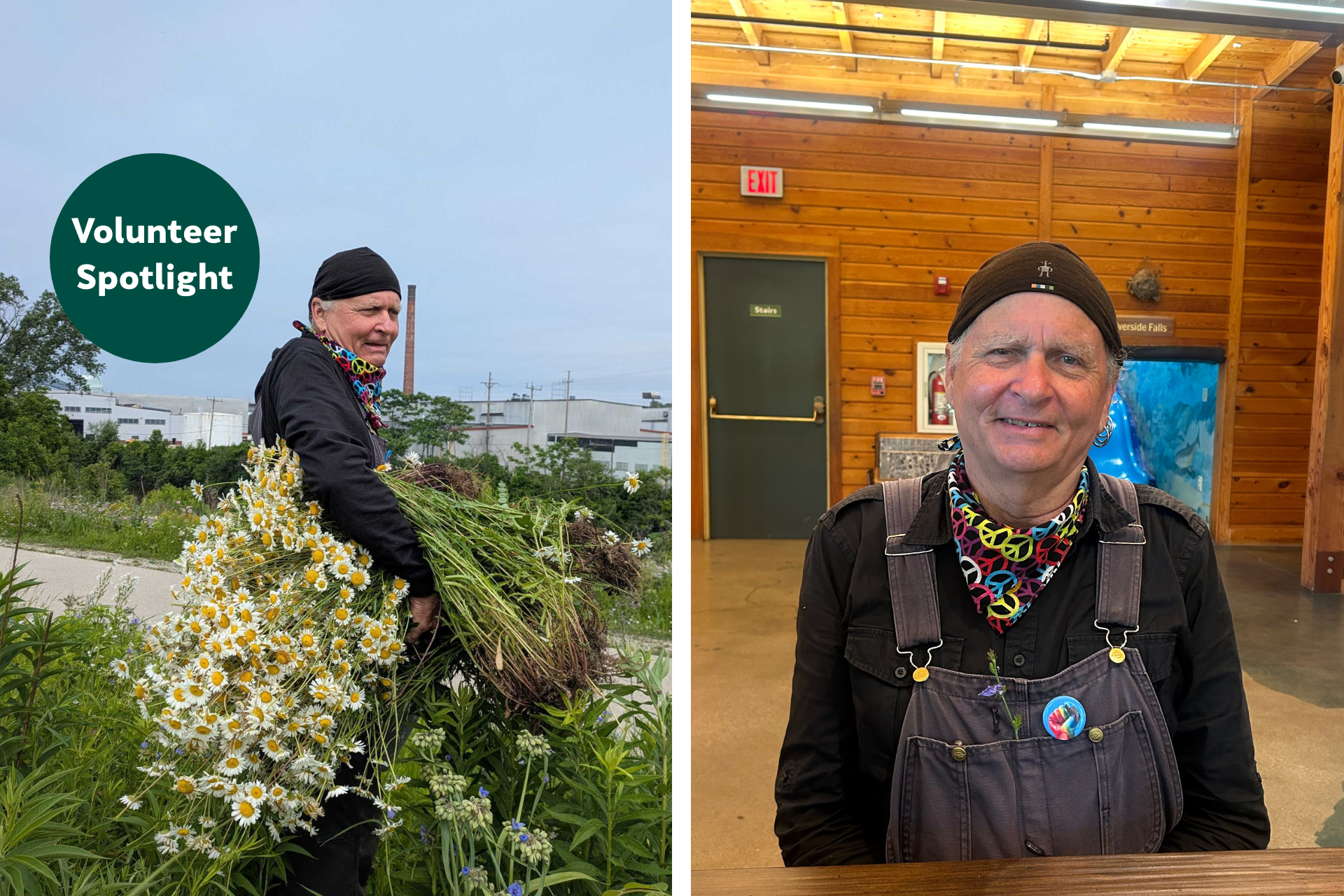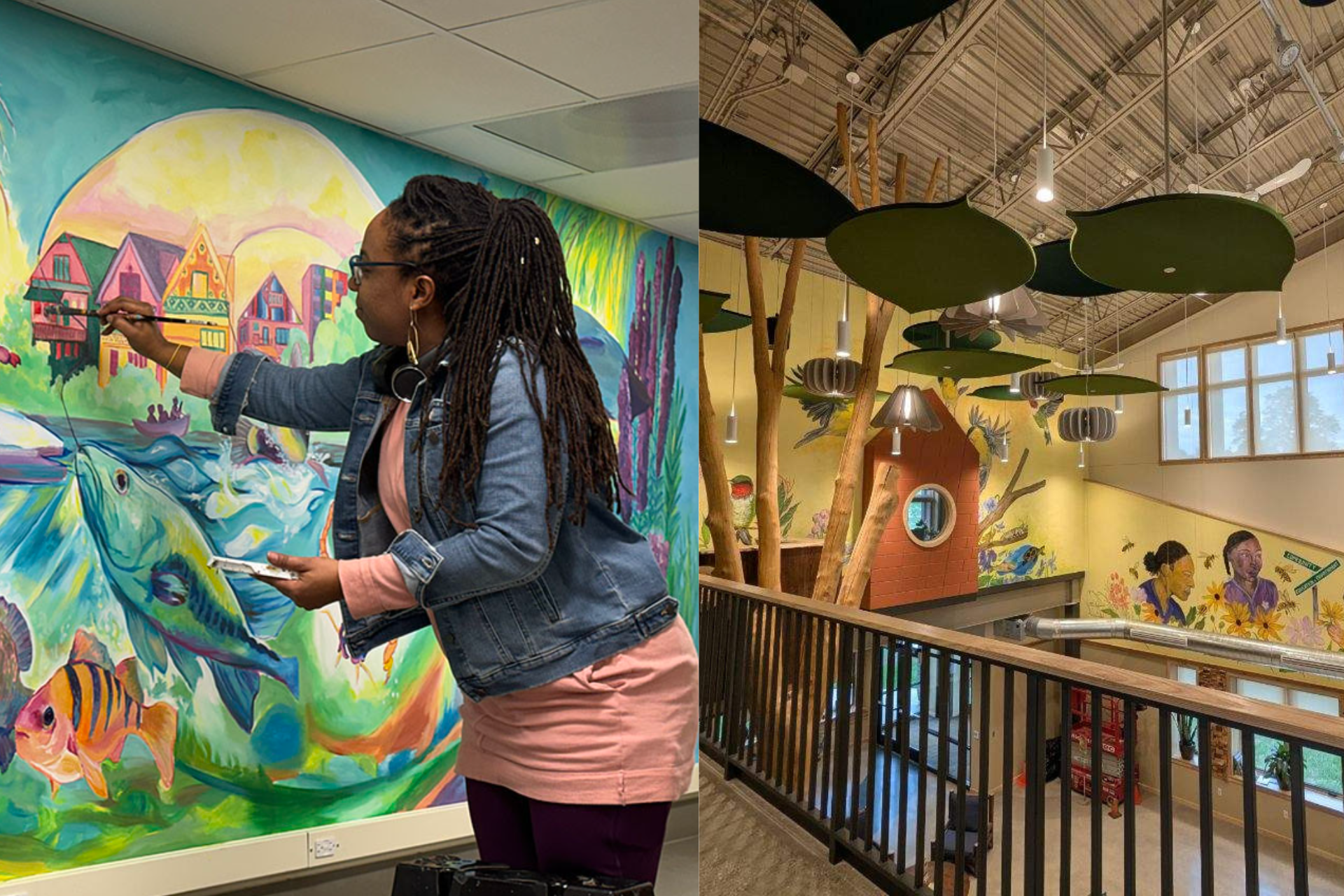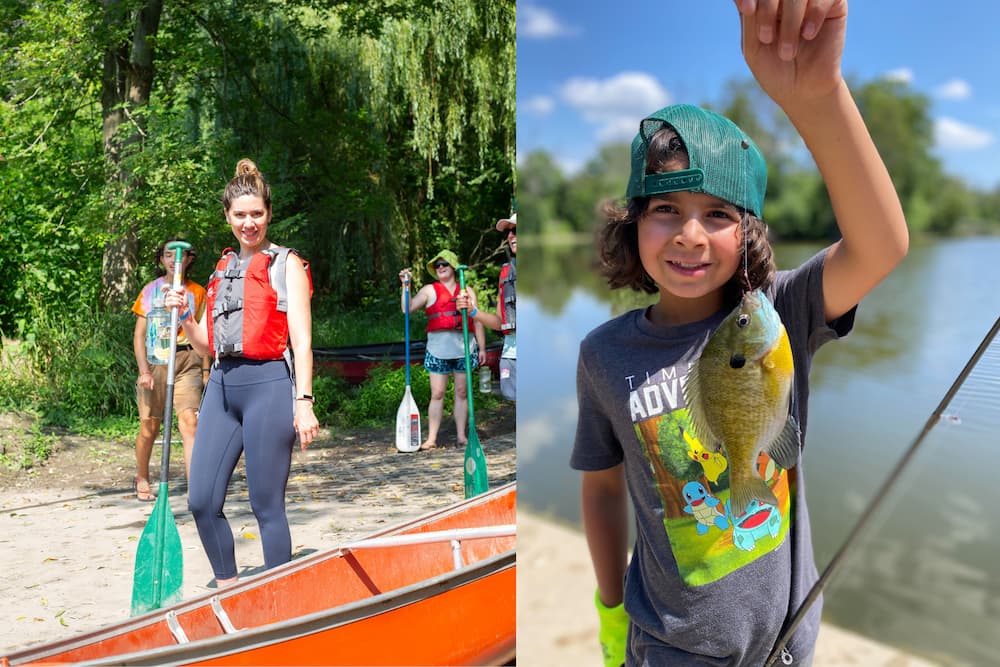Mental Health and Nature
When I began working at the Urban Ecology Center this summer, I knew spending time in nature made me happy. What I did not expect was how energized I felt after my morning commute through the Oak Leaf Trail, or the sustained focus I had after taking my lunch break outdoors. Was it just in my head, or was this time in nature improving my mental health?
After spending time in nature, one may feel at peace, energized, or even euphoric. But what are the long-lasting effects of natural spaces on our mental health? Can these experiences truly change our minds? It’s not all in your head— or, it is, but it’s backed up by science. Across the board, studies find that access to natural spaces improves one’s mental health.

The University of Sheffield found that engaging with nature can be beneficial to those with sustained mental health challenges. Furthermore, these benefits were seen through everyday contact with and appreciation for nature. Participants were asked to track “good” things they saw in nature for seven days, which improved their overall feelings of well-being. A month later, these feelings continued.
Another study from the University of British Columbia showed that even just a few moments of nature can improve one’s mental well-being. Participants found that something as small as one tree at a bus stop made a difference in their mental health.
These practices— as simple as they may seem— point to two important takeaways. First, access to green spaces should be a daily reality. Second, being fully present in an experience increases the mental benefits nature brings. The UOS researchers write, “Unexpected changes are possible when the ordinary is considered special.” It truly is about appreciating the little things— literally, like a beetle on the sidewalk or a tiny mushroom growing in one’s yard. Noticing and appreciating all aspects of the natural world is key to experiencing the benefits of nature.
Aside from the direct benefits of spending time in nature, natural spaces also help mitigate the negative impact urban spaces have on us. Living near green spaces makes people more likely to exercise, which is proven effective at improving mental health symptoms. Additionally, urban green spaces help to decrease noise and air pollution, which increasingly damage city dwellers' mental and physical health.

While learning to appreciate the nature around us is important, researchers find that biodiverse environments provide the greatest number of benefits. In biodiverse greenspaces, folks can enjoy a wider range of sensory inputs— the call of a robin, for instance, may sound sweeter with the scent of wildflowers in the air, as opposed to exhaust fumes. An oak savannah and a mowed lawn are not going to have equal benefits when it comes to mental health. A “green” space needs to be more than just the color green. It must contribute toward the health of both humans and the ecosystem as a whole.
Access to greenspaces improves mental health across the board. The issue now isn’t whether or not this is true, as numerous studies have proven such. The problem is the “access” part of the statement. The UOS researchers state that the issue is one of “equality.” Without equal access to natural spaces, mental health improvements will only be seen by a lucky few. Nature should not be a resource one must leave the city to find; by integrating nature into the preexisting urban landscape, we can create a more well and just Milwaukee.
While we all work on creating a solar-punk city, there are still ways city dwellers can reap the benefits of natural spaces. Outside of simply visiting a park on your day off, other activities incorporate green spaces into everyday life.
- Cycle on green trails
- Bike commuting has its own mental benefits, but coupled with a commute through natural spaces is a mental health 2-for-1. But if Google Maps has you cycling to work on i-94, no need to worry. You can always swap out brief car rides for bike rides, or plan a multi-modal trip to the Oak Leaf or Hank Aaron trails.
- Join a local community garden
- Milwaukee is home to many community gardens. Find one in your area and carve out a few hours each week to volunteer. If you can’t find naturally occurring green spaces, community-made will work just the same. Bonus points if you’ll be doing something labor-intensive— as stated, exercise is always good for mental health.
- Groundwork USA
- is a good place to start looking. You can also rent a plot in our Riverside Park and Menomonee Valley
- Community Gardens.

Urban Ecology Center Community Gardens in Three Bridges Park
- Visit indoor gree
- n spaces
- With recent air quality challenges, enjoying the outdoors is not always safe. Typically, indoor greenspaces are seen as a winter activity, but this summer we may be visiting them again. While beer gardens are a Milwaukee staple, the Blum Coffee Garden in Greenfield offers both indoor and outdoor greenery and can be enjoyed by all. Locally, the plant shops STUMP and ModGen are fun to visit. However, don’t blame me if you leave with an empty wallet and arms full of houseplants. Of course, there are always the wonderful Mitchell Park Domes, one of which is occupied by a DinoDomes floral show until September 10th.
This blog is written by Jenna Koch, 2023 Green Career Pathways Intern.




.jpg)



.png)
.png)